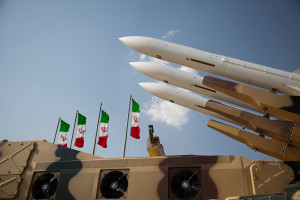The International Atomic Energy Agency’s ability to monitor Iran’s nuclear programme has been further hampered, as the country begins to shutdown 27 IAEA surveillance cameras at its nuclear sites. Equipment used to collect data on uranium enrichment and centrifuge production has also been shut down and the IAEA nuclear watchdog believe they will no longer be able to monitor the country, delivering a “fatal blow” to the faltering JCPOA nuclear agreement.
Iran began to dismantle the IAEA’s monitoring equipment last week, following a successful landmark motion of censure against the country by the IAEA. The cameras are meant to monitor everything from the testing of centrifuges, production of centrifuge components and the mining of uranium – all critical elements in a nuclear weapons programme. However, Iran has now stopped key cameras and has also begun to dismantle other monitoring equipment. At its nuclear site in Natanz, Iran is shutting down equipment used to measure the quantity and purity of enriched uranium, as well as a flow metre which tracks the production of heavy water. Tehran is also increasing its capacity to enrich uranium by installing hundreds of new advanced centrifuges at its site in Natanz, increasing its production of nuclear material to historic levels. According to reports, Iran has stated these decisions are reversible and it could be using them to pressure the United States to lift sanctions on the country and remove its proscription of the IRGC terror group.
The IAEA’s Director General, Rafeal Grossi stated that if Iran continues with these plans, within four weeks, the IAEA would no longer be able to ensure it has sufficient knowledge of Iran’s nuclear activity. Iran’s actions would also prevent the IAEA from receiving previous footage and data, as since February last year, Iran has refused to release of a substantial amount of surveillance data to the IAEA. Iran has demanded an end to U.S. sanctions before it releases past data and now it has dismantled additional monitoring equipment Grossi believes it could be “a fatal blow” to the future of the JCPOA.
Reports indicate that 40 other cameras are still in operation, but these remain under threat if Iran is no longer party to the Nuclear Non-Proliferation Treaty. Grossi said whilst the IAEA could construct projections of Iran’s nuclear programme using working equipment and past data, it could only do so for a very brief period of time, adding: “You cannot go months and months without any access, without any information”.


